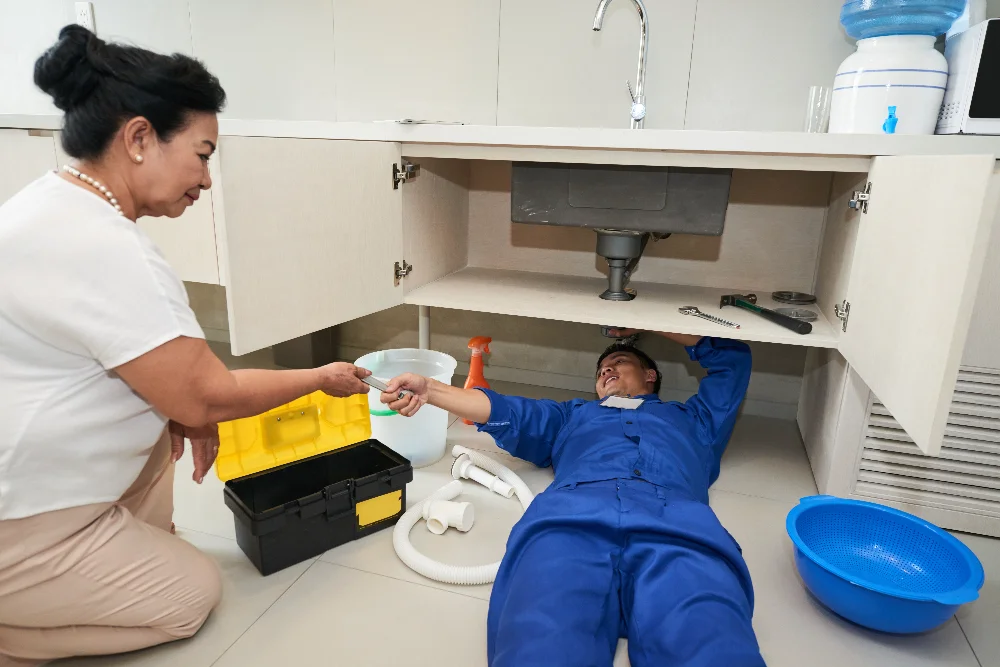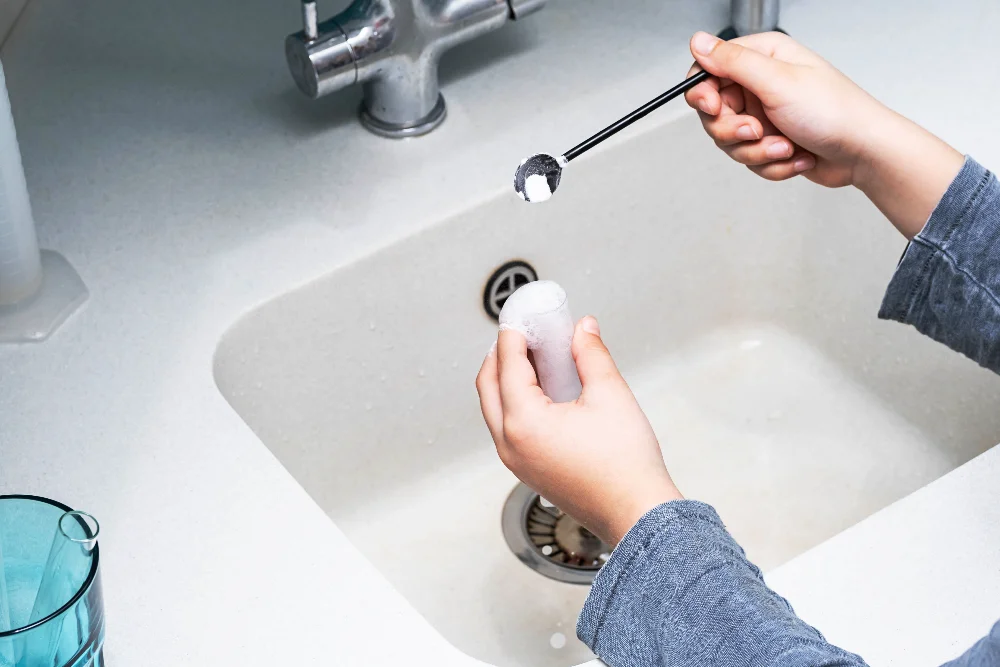
The kitchen is the heart of your house. However, when your kitchen drain pipe clogs, it may quickly become a pain. Nobody likes standing over a sink full of murky water. It smells awful and disturbs your day. Learning how to clean kitchen drain pipes is crucial for a smooth kitchen routine. Let’s speak about the most prevalent reasons, warning signs, DIY solutions, and preventative suggestions for keeping your kitchen drain in good working order.
Common Causes of Kitchen Drain Blockages
Kitchen drains manage a large amount of waste. Over time, they accumulate grease, soap scum, coffee grounds, and leftover food scraps. Even if you’re diligent, little particles can get through and accumulate. Grease and oil are the most troublesome. They adhere to the pipe walls, trapping additional material. Another typical reason is starchy foods such as pasta and rice. They expand in water and readily block pipes. The more you understand the reasons, the more effectively you can prevent them.
Identifying Signs of a Clogged Kitchen Drain
Clogs may appear to form quickly, although they usually do so gradually. Look for warning indicators before things escalate. The first sign of trouble is delayed water drainage. Gurgling noises are another. This noise indicates that air is trapped owing to obstruction. Unpleasant scents are often a big giveaway. If you observe bubbles or water backing up in the sink, respond quickly. Knowing these indicators early on allows you to take prompt action for kitchen drain cleaning.
DIY Methods on How to Clean Kitchen Drain Pipes
Let’s get into the fun part: basic and easy DIY approaches! Here’s the best way to clean the kitchen drain without hiring a professional:
The Boiling Water Technique
This is the easiest method to get started. Boil a pot of water, then gently pour it down the drain. Wait a minute, then repeat. Boiling water dissolves grease and removes minor accumulations. This frequently solves mild blockages.
Using Baking Soda and Vinegar
A classic Baking Soda and Vinegar combination! Pour half a cup of baking soda down the drain. Finish with half a cup of vinegar. Wait for the fizzing magic to occur. After 15 minutes, flush with hot water. This is not only convenient but also environmentally friendly. It reduces odor and accumulation.

Plunging for Minor Blockages
A kitchen sink plunger is your friend. Fill the sink halfway with warm water. Place the plunger over the drain and push it up and down forcefully. The suction helps to remove debris. This works great on shallow clogs.
Disassembling and Cleaning the P-Trap
Clogged drains can sometimes be found in the P-trap beneath the sink. Place a bucket beneath the trap and unscrew it gently. Remove any accumulated filth within. Rinse, then screw it back on. This is a hands-on procedure, but it is quite successful when nothing else works.
Effective Tools for Tougher Clogs
When DIY tactics fail, it’s time for more powerful equipment.
Using a Drain Snake or Auger
A drain snake is ideal for removing stubborn obstructions. Insert it into the drain and gently spin it. It hooks the clog, which you then pull out. A power auger can also be used to clear more problematic obstructions.
Chemical Drain Cleaners
These can be effective, but exercise caution while using them. Always follow the directions. Do not combine them with other cleansers. Overuse can cause pipe damage; thus, they should only be used as a last option.
Natural Enzyme Cleaners
These cleansers employ natural microbes to break down blockages. They are safe for pipelines and the environment. Use them on a monthly basis for maintenance. Many experts believe they are the best way to clean kitchen drains on a regular basis.
How Often Should You Clean Your Kitchen Sink Drain?
It is better to prevent than to cure. Clean your kitchen drain once a month to ensure it runs smoothly. Use hot water or enzyme-based cleansers. Also, every few weeks, do a kitchen sink clean out with baking soda and vinegar. Make it a part of your cooking regimen.
How to Prevent Future Kitchen Drain Clogs
Even after learning how to clean kitchen drain pipes, prevention is essential.
Proper Disposal of Food Scraps
Always scrape food scraps into the garbage. Use sink strainers to collect tiny particles.
Avoiding Grease and Oil Down the Drain
Never put grease or oil in the sink. Allow to cool completely before discarding.
Regular Maintenance and Cleaning Schedule
Stick to a cleaning schedule. Rinse with hot water and use enzyme cleansers. This will avoid the accumulation.
Installing Drain Cleaners
Consider adding drain cleaning equipment. These collect food scraps and make kitchen drain cleaning much easier.
When to Call a Professional Plumber in Bedford, TX
Sometimes, blockages are beyond your control. If your sink routinely backs up or smells foul, it’s time to call a professional. Another clue is when there is water gathering under the sink. When in doubt, avoid DIY harm. A skilled plumber will check, clean, and resolve the issue quickly.
Wrapping It Up: Keep Your Kitchen Drain Flowing Smoothly
Cleaning your kitchen drain does not have to be stressful. By following these basic guidelines, you may save problems and costly repairs. From boiling water to enzyme cleansers and regular maintenance, these methods will teach you how to clean kitchen drain pipes like an expert. However, keep in mind that certain obstructions require professional assistance.
When DIY solutions fail, we at On Point Plumbing DFW are here to help. We’ve got you covered, whether you have a blocked kitchen sink or need to clear it out completely. Our professional crew offers prompt and dependable kitchen drain cleaning services in Bedford, TX, and the surrounding regions.
Don’t let clogged drains ruin your day. Visit On Point Plumbing DFW or contact our team now!
